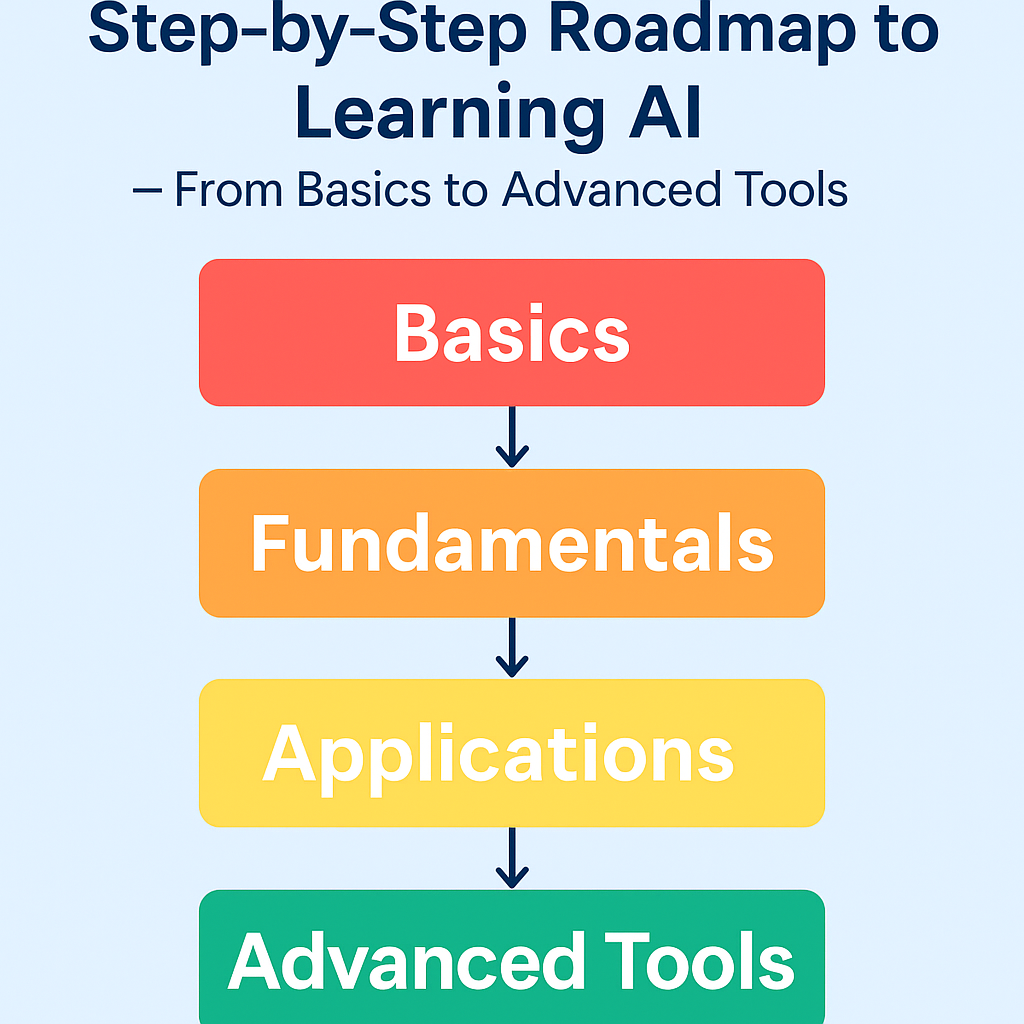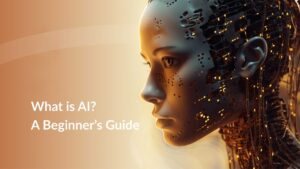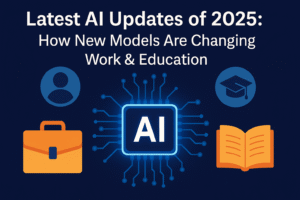
Artificial Intelligence isn’t just the future — it’s the now. Whether you’re a student curious about tech, a professional looking to switch careers, or simply a hobbyist fascinated by what AI can do, this guide will walk you through a clear, practical path to learning AI from scratch.
The idea here is simple: instead of drowning in jargon or getting lost in random tutorials, we’ll move step-by-step — starting with the fundamentals, layering on practical skills, and eventually building real projects that you can proudly show off.
Why This Roadmap Works
A lot of beginners either jump straight into advanced tools without understanding the basics, or they stay stuck in theory without creating anything useful. This roadmap mixes core concepts with hands-on practice so you’re always learning and building.
Think of it like learning to cook: you start with understanding ingredients (theory), then follow recipes (guided projects), and eventually you create your own dishes (real-world applications).
Phase 1: Build Your Foundation
Before you jump into machine learning models, you need a strong base.
- Learn Python: It’s the most beginner-friendly programming language for AI. Focus on variables, loops, functions, and data structures.
- Understand Data Handling: Libraries like NumPy, pandas, and matplotlib will help you work with data and visualize it.
- Math Matters: A basic grasp of linear algebra, probability, and statistics will help you understand how AI models “think.”
Phase 2: Machine Learning Fundamentals
Now we get to the heart of AI.
- Supervised Learning: Training models to predict outcomes (like house prices or exam scores) based on labeled data.
- Unsupervised Learning: Finding hidden patterns in unlabeled data (like grouping customers by behavior).
- Scikit-learn: Your go-to library for building and testing beginner-friendly models.
Phase 3: Deep Learning & Specializations
Once you understand machine learning, it’s time to explore the cutting edge.
- Neural Networks: The backbone of deep learning.
- Computer Vision (CV): Teaching machines to “see” — from image classification to facial recognition.
- Natural Language Processing (NLP): Teaching machines to understand and generate human language.
- Transformers: Modern architectures behind tools like ChatGPT.
Phase 4: Tools, Projects & Deployment
Knowing theory is great — but AI shines when you put it into action.
- Frameworks: TensorFlow, PyTorch, and Hugging Face.
- Deployment: Use Streamlit or Flask to create simple web apps that showcase your AI models.
- Version Control: Learn Git and GitHub to collaborate and track changes.
Phase 5: Ethics & Ongoing Learning
AI isn’t just about what you can do, but what you should do.
- Understand bias, privacy concerns, and fairness in AI.
- Follow AI news, research papers, and participate in challenges on Kaggle to keep your skills fresh.
FAQs
Q: How long will it take to learn AI?
With consistent practice, you can be building projects in 8–10 months.
Q: Do I need a degree?
No — many successful AI professionals are self-taught.
Q: What’s the best starting point?
Python, NumPy, pandas, and Scikit-learn.
Q: How do I pick a specialization?
Experiment with different projects — you’ll naturally gravitate toward what excites you.
Q: How do I ensure my AI is ethical?
Use unbiased datasets, test for fairness, and be transparent about limitations.
Also Read: What Is Artificial Intelligence? A Beginner-Friendly Guide for 2025


